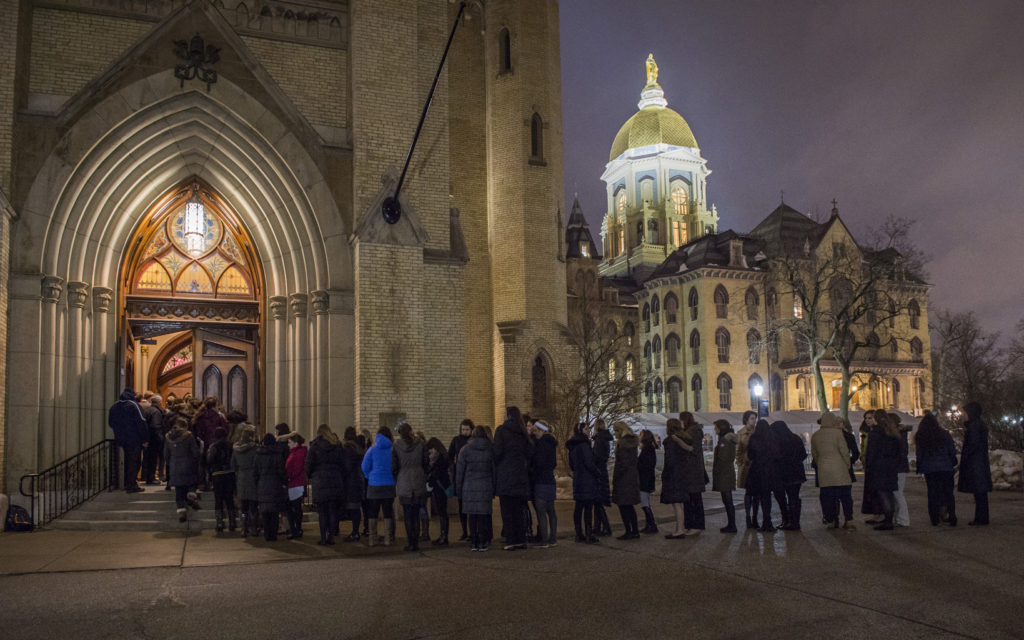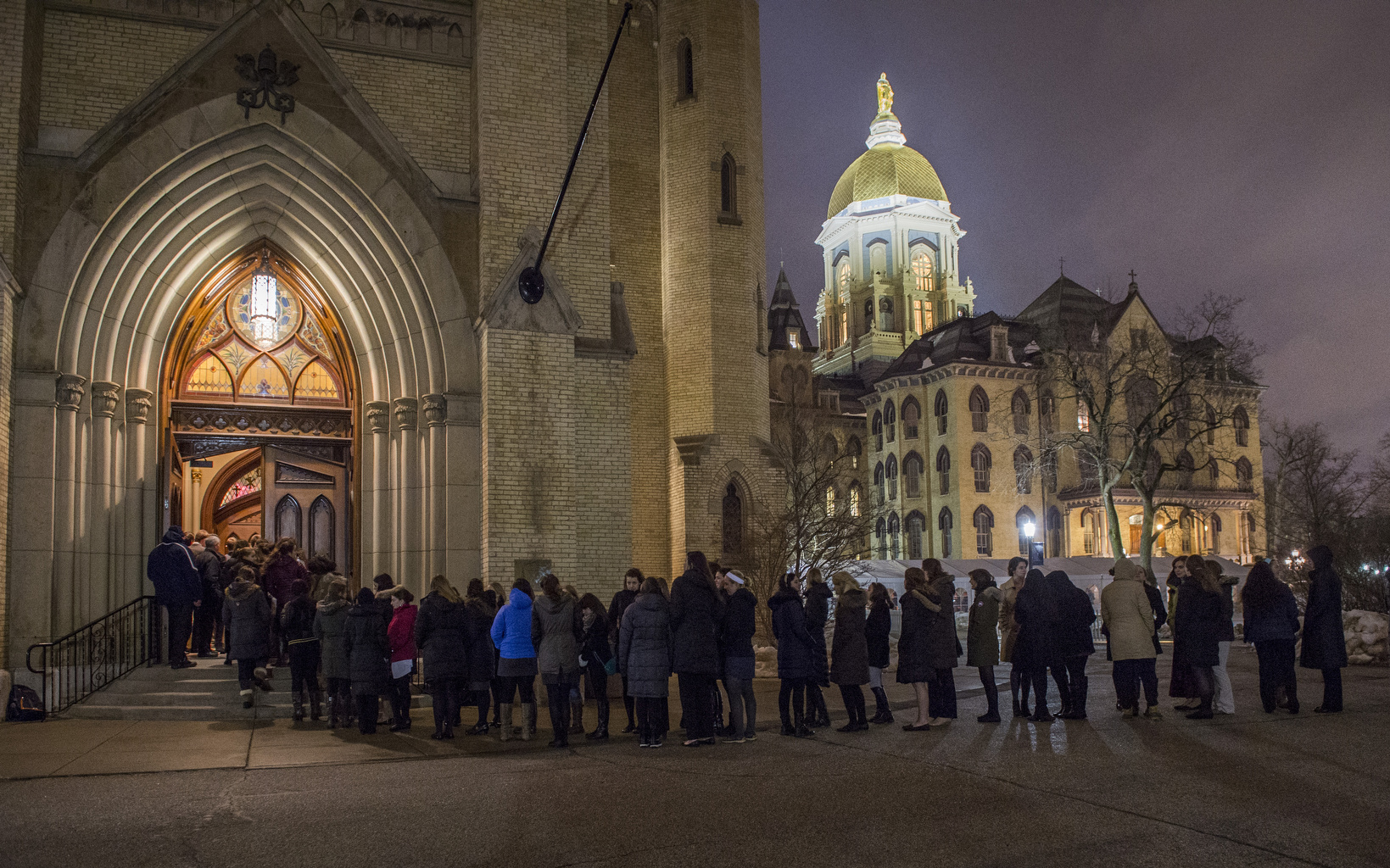
NOTRE DAME, Ind. (CNS) — Ryan Leahy of Chicago walked up to an employee on the snow-covered campus of the University of Notre Dame March 3 and asked her to take a photo of him and his family members in front of the school’s iconic gold dome.
Though the family reunion of sorts was chronicled with that snapshot, they came together for another well-known Notre Dame pillar.
They traveled from different regions of the U.S. to attend two days of services honoring the life of their friend, Holy Cross Father Theodore M. Hesburgh, the longest serving president of the university, from 1952 to 1987, who died Feb. 26 at the age of 97.
As Ryan Leahy huddled with his brother Patrick and father James, both of who traveled from Yakima, Washington, they took a moment to discuss with Catholic News Service their family’s connection with Father Ted and his legacy.
“My father, who was Frank Leahy, the athletic director and head football coach here and Father Ted Hesburgh had a very interesting relationship,” said James Leahy, a 1969 graduate of Notre Dame.

When Father Hesburgh arrived at Notre Dame in the 1940s, the Indiana Catholic campus was best known for its football excellence, and when he became president of the school in 1952, he vowed to turn the university into great academic institution, “which of course he did,” James Leahy said.
“He and my father probably had conflict over the importance of football and academics,” James Leahy said, and the two men later concluded that both were important for the success of Notre Dame.
The Leahys were among hundreds of people who arrived at the Indiana campus on the cold and dreary day of March 3 to pay tribute to Father Hesburgh, who is not only credited with transforming Notre Dame into one of the nation’s premier higher-education institutions, he was considered a trailblazer in civil and human rights.
Father Hesburgh’s work with several popes and U.S. presidents was highlighted during an evening wake service March 3 at the Basilica of the Sacred Heart on the Notre Dame campus.
When he was appointed to serve on the U.S. Commission on Civil Rights by President Dwight D. Eisenhower, who created it, the priest “did not have much experience in this great scourge on American rights,” said Holy Cross Father Edward A. Malloy during the wake service. “But, he was a quick learner.”
Father Malloy, who succeeded Father Hesburgh as Notre Dame’s president and served in the post until June 2005, recalled an image of Father Hesburgh linking arms with civil rights leader the Rev. Martin Luther King Jr. and singing, “We Shall Overcome”; his work on immigration reform; his realized vision to create an institute of peace at Notre Dame; and his tireless work for nuclear disarmament.
Throughout the course of his life, Father Hesburgh played a “providential role in the great events of our time,” Father Malloy told the people who packed the basilica for the wake.
A portrait of the late Notre Dame president was illuminated by flickering candles placed near the altar.
Faculty members, clergy, politicians, peace activists and Notre Dame alumni stepped up to pray in front of Father Hesburgh’s open casket, prompting Father Malloy to say how delighted he was to see such a cross section of society at the service and gathered on the campus.
His vision for great Catholic universities was a lifelong mission, Father Malloy said, and then quoted Father Hesburgh’s line that “a Catholic university is a place where the church does its thinking.”
The wake did not appear to be a sad event, but a celebration of life well lived.
Former President Jimmy Carter, his wife, Rosalynn, and former Secretary of State Condoleezza Rice were scheduled to speak during a March 4 tribute to Father Hesburgh, following a funeral procession from the basilica to the burial site at the Holy Cross Community Cemetery.
Above all, Father Hesburgh loved being a priest, Father Malloy said.
“He was a man of prayer,” he celebrated Mass every day and he would invite people of other religious faiths, atheists, Russian politicos and others to join him, Father Malloy said. “He tried to be a pastor to anyone who came into his presence.”
— By Chaz Muth, Catholic News Service.







